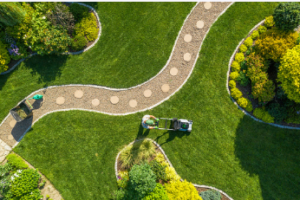Landscape design is the art and science of transforming outdoor areas into aesthetically pleasing locations. A designer uses their creative vision and knowledge of climate conditions and plant life to craft the ideal landscape.
 Catnik-Design-Studio Landscape Designer Adelaide works in public parks, private homes and golf courses. Additionally, they assist with preservation planning for historic sites.
Catnik-Design-Studio Landscape Designer Adelaide works in public parks, private homes and golf courses. Additionally, they assist with preservation planning for historic sites.
Education and Training
The education and training you receive can significantly impact your career. A bachelor’s degree in horticulture or environmental design will give you the foundation for this field and boost your resume. Alternatively, you could enrol in an associate’s degree program or professional certification course to gain more insight into the industry.
Landscape design education can be obtained through online courses and college programs that offer degrees in this discipline. The ideal methods will provide an underlying horticultural foundation while teaching practical business skills through accessible learning modules.
Some online landscape design courses can be finished within a few hours, while others require up to 12 months or more of dedication. Depending on your certification level, systems may cost as little as $45 or run up a bill above tens of thousands in tuition alone.
If you’re considering starting your own landscape design business, an EIN and tax ID are necessary for filing taxes on the company and purchasing materials from wholesale distributors. With these documents in hand, the process could not be smoother!
Professional certification in landscape design can give you an edge in your marketing and enable you to take on more complex projects requiring more expertise. It could result in increased income and reduced project completion times.
Design Process
The design process is collaborative and iterative and begins with a site assessment. This assessment allows the designer to understand your needs and desires and determine how landscape plans best address those requirements.
The conceptual design allows the designer to experiment with plant bedlinens, hardscapes and other features that will make your outdoor living space stand out. They can also decide the optimal placement for a grass installation area and how all these elements combine to form your perfect outdoor living area.
Once the conceptual design is complete, your designer can create a planting schedule and detailed layout of all hardscapes and beds. It includes an exhaustive list of plants that will be included in your new landscape and information regarding each plant’s conditions.
These designs will guarantee your family a beautiful landscape for years and easy access when necessary – like during a storm or hot summer day.
Clients
At the initial consultation, a landscape designer asks questions about the client’s objectives for their property. It may include budget, style and maintenance requirements. The designer then explains their design process and displays examples of their work.
Design-build firms typically charge hourly or flat fees, depending on experience and delivered results. Some design-build firms provide a complete package of services, including designing, building and installing the project.
Many landscaping clients desire a one-stop shop approach. They do not want to entrust different contractors for different parts of their property, so it is crucial to have an experienced landscape designer who can manage all elements of a client’s landscaping.
Catnik-Design-Studio Landscape Designer Adelaide must also know their local climate intimately to select suitable plants and hardscape features.
To achieve the most efficient design for clients, take them for a walk around their property and discuss their preferences. The landscape designer can then incorporate these insights into their plan.
Project Management
Project management is essential in ensuring clients are satisfied with the finished product. It involves planning, budgeting and organising all design components from beginning to end.
At this stage, the designer will collaborate closely with the client to craft a plan that accurately reflects their vision for the project. It includes designing an attractive layout of hardscapes, beds and plants to form part of the landscape design. Additionally, an organised plant schedule will indicate all plants’ names and sizes.
Once the design is finalised, it’s time for construction. It is an enormous milestone in any development project and necessitates a great deal of effort from the landscape designer.
These plans are typically comprehensive, providing information on grading and drainage requirements. These documents assist developers in deciding if their design is feasible and providing an estimate for costs associated with implementation.